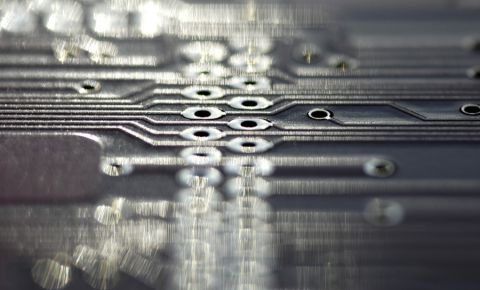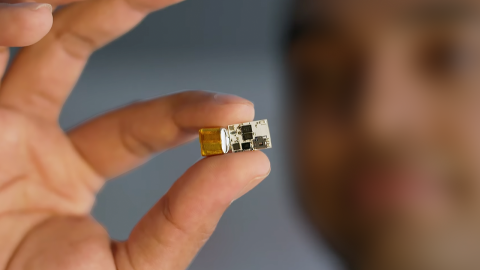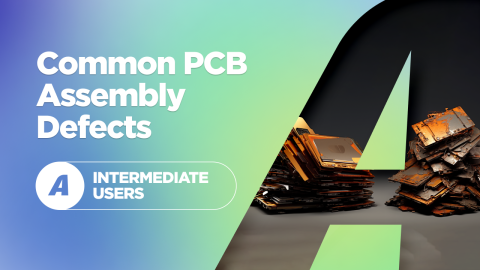How to Create a PCB Manufacturing Cost Estimation

Unless I receive a layout job directly from a manufacturer, my clients will usually ask if I’m a manufacturer. My company doesn’t manufacture boards, but I think it’s important to keep clients informed of the manufacturing costs for new PCBs. Once I started gathering estimates for some of my first projects, I started to better understand the primary cost drivers of PCB manufacturing and how to properly structure a comprehensive estimate for my clients.
Some manufacturers have very convenient PCB manufacturing cost estimation calculators you can use, but the real costs depend on a number of factors. If you’re an entrepreneur and you’re producing your own boards, or you are managing manufacturing, testing, and delivery for a new project, it’s your job to help clients understand the primary cost drivers for new boards. Here’s how you can get an estimate of your fabrication costs, both for local and overseas manufacturers.
What Drives PCB Manufacturing Cost Estimation?
There are a number of factors that drive manufacturing costs. In general, producing more boards, using more vias per board, using smaller traces/vias/mounting holes, and using more components per board will all increase manufacturing costs. However, the costs involved are not linear. In other words, double the number of boards and components will not double the total cost of an order.
There are some important reasons for this. There are a number of fixed costs involved in any manufacturing run, including tooling costs, design review, stencil creation, and others, depending on your requirements. Other costs are variable and are determined on a per-board basis. The cost per board can decrease as order size decreases, which has less to do with panelization and more with amortizing fixed NRE and tooling costs across an entire fabrication run. The same idea applies to assembly (see below).
Pre-Production DFM Review and Inspection
Some PCB manufacturing houses will offer different levels of service as far as a pre-production inspection, design and engineering review, and DFM review are concerned. Taking advantage of a full engineering review can significantly increase the per-board cost at low volume as it carries an additional fixed cost. Note that, some level of PCB design review has to occur for the design to be quoted and to ensure it is even manufacturable. If you violate some basic design constraints (clearances being the most important), your project might get marked no-bid until you correct some basic errors.

This is where level of service and the extent of any review is very important. Sometimes, an electrically correct and manufacturable design choice will not trigger a DFM violation in terms of fabrication ability, but it may create risk of an assembly defect or a total failure of your product. A perfect example is pads that are too close together without sufficient solder mask definition on the pad. The reverse is possible as well, where an electrically correct design choice triggers a DFM violation, yet the design choice was intentional. My company does many designs involving RF structures and waveguides, and we sometimes get a notification of a short circuit during a PCB design review or when running DRCs. Be sure to inquire what is involved in this type of review and determine which design deliverables you need to provide before adding an engineering review service to your quote. It's always good if you can anticipate these intended or unintended DFM violations and to communicate them with the CAM engineer at your fabrication house.
PCB Fabrication Cost Drivers
Here is a short summary of some major cost drivers involved in fabrication. Be sure to consider each of these areas when creating a PCB manufacturing cost estimation.

Regarding the number of boards being fabricated, the main driver is not really the number of boards, it's the cost per panel. For a small run, per panel cost and NRE costs will determine your per board cost. At high volume, the per overall per board cost comes down as variable costs dominate the overall production run cost. The other points above are just the starting point for manufacturing as they only focus on bare board fabrication. There are also assembly costs to consider.
Assembly Cost Drivers
The cost drivers involved in assembly boil down to the following:
- Number of unique components: More unique components equates to higher cost, although ordering components in bulk reduces the price per component.
- Type of components: All-SMD assembly can cost up to ~50% more through-hole assembly.
- Double-sided vs. single-sided assembly: Double sided assembly adds to costs as your board essentially has to run down the assembly line twice. There is also greater NRE costs for double-sided assembly
- Lead pitch on SMD components: I’ve seen that any premium on fine-pitch SMD components varies by manufacturer. If you’re already using all-SMD, some manufacturers will not charge extra for finer pitch components.
- BGAs: Single-sided or double-sided BGA component assembly can cost ~20% more than other SMD components, which is in addition to any premium that's already charged for double-sided assembly. Finer pitch BGAs below some limit could carry additional costs, depending on fab and assembly capabilities.
- IPC 6012/IPC-A-600 Class 3: Production and assembly up to IPC-A-600 Class 3 can carry significantly higher costs, although the quality of the final product will be much higher. The costs are also higher due to additional inspections required to verify compliance with the higher performance and inspection specifications imposed on Class 3 products.
- ITAR compliance: If you’re working in the U.S., your project may need to be ITAR compliant. Finished PCBs will need to adhere to ITAR requirements on data integrity, PCB integrity, and shipping. These costs get passed on to you as the designer.
Unless assembly is being done by hand, assembly costs will not always increase linearly with the number of boards. In other words, with automated assembly, doubling the number of boards does not always double the cost of assembly. Some of the assembly cost goes into programming machines, while the remainder effectively pays for machine time.

Component costs follow a similar structure. When you order more components, you might reach a new price tier with your component distributor where the cost per component drops. This is one reason it’s better to buy from a single distributor rather than mix-and-match multiple distributors.
Overseas vs. Local Production
We live in a globalized environment, and it's never been easier to outsource fabrication and/or assembly to a region with lower labor costs. The choice to do so depends on the production volume, level of service required, the risk involved in exposing a design oversees, lead time required, and potential cost savings.
For basic designs that have been thoroughly qualified, I’ve found that Chinese manufacturers can do the job just fine, although they nickel-and-dime you on small additions to the order (e.g., certain screen printing features, testing, solder mask color). I've had clients tell me horror stories where the design they sent in did not at all resemble the product they received; apparently the manufacturer made many modifications to the design in order to cut costs as low as possible, then they pocketed the difference. There are also intellectual property concerns, and the risk of exposing design data to an overseas party could be unacceptably high. For mil-areo designs in the US, export control restrictions (EAR) and ITAR requirements will limit your ability outsource fabrication and ship overseas; similar restrictions apply in Canada and Europe.
There are some real benefits to staying local, even if the cost is higher. I prefer local manufacturers as it gives me more control over the entire process, especially for prototyping or low-volume production. I might end up paying a more per unit at low volume, but myself and my clients are willing to pay for the extra level of service, responsiveness, and security in knowing our designs won't be stolen. If you're willing to accept the risk involved in going overseas for fabrication, you could work with a contract manufacturer (CM) that uses a qualified overseas fabrication house and assembles locally. For more advanced designs, or if the design carries some specific testing/inspection requirements, I’d rather use a local manufacturer as I can always talk to someone on the phone directly.

In terms of cost, the per-unit price for a board produced locally (in the U.S.) can be a factor 5 as large as the price for the same board produced overseas with the same lead time. Assembly is another matter altogether, as not all manufacturers will provide on-site assembly, and you’ll need to get a quote from an assembler company. Having to ship your boards from your manufacturer to your assembler also increases your lead time, which adds intangible costs to your new product.
Testing, Inspection, and Qualification
Testing and inspection are two important activities that also need to be performed when a new board is produced. Production and inspection up to IPC-A-600 Class 3 costs more than Class 2 or Class 1; the same applies to other relevant standards and classes. You might also need to produce to a specific set of industry standards, such as IPC-13485, NADCAP, or AS9100, but it's hard to make generalized statements regarding costs with these manufacturers. Qualification to UL standards or other specific industry standards normally carries an added cost and will not be available from every manufacturer. This is where different manufacturers can have big differences in capabilities, which will determine costs involved in testing, inspection, and qualification. Make sure to account for these points when requesting quotes from manufacturers.
Last But Not Least: Components!
With all this talk about fabrication and assembly costs, it's easy to forget about the costs for the actual components. In today's environment of semiconductor shortages, all the big EMS companies are moving from a just-in-time to just-in-case supply chain model. This means designers need to place a role in risk management by performing sourcing activities at the start of the design, not at the end of a design. This isn't necessarily a cost driver for fabrication or assembly, but it can create the need for a redesign when you suddenly find that your critical components go out of stock.
- Identify critical components with few or no replacements early, and then procure minimum required stocks.
- Ideally, instead of #1, use components that have some available replacements (ideally pin compatible) and plan to procure the required quantities before production.
- For specialty parts where you'll deal directly with a manufacturer, nail down the requirements at the beginning of the design and place an order with the component manufacturer early. The lead time might be long, but you'll have parts in transit before you finish the design.
If you're part of a service bureau or larger engineering firm, make sure to account for these points early in the design process. It may take some commitment from customers, but locking in these requirements early helps you eliminate a lot of risk and cost increases before going to production.
When you’re building a new PCB, Altium Designer® gives you the tools you need to create products that include advanced features while complying with your manufacturer’s DFM requirements. You’ll also be able to quickly generate deliverables and documentation that help ensure you'll get an accurate PCB manufacturing cost estimation. When you're ready to release your project for a PCB design review, you can use the Altium 365 platform to share design data with your manufacturer and get to market quickly.
We have only scratched the surface of what’s possible with Altium Designer on Altium 365. Start your free trial of Altium Designer + Altium 365 today.











